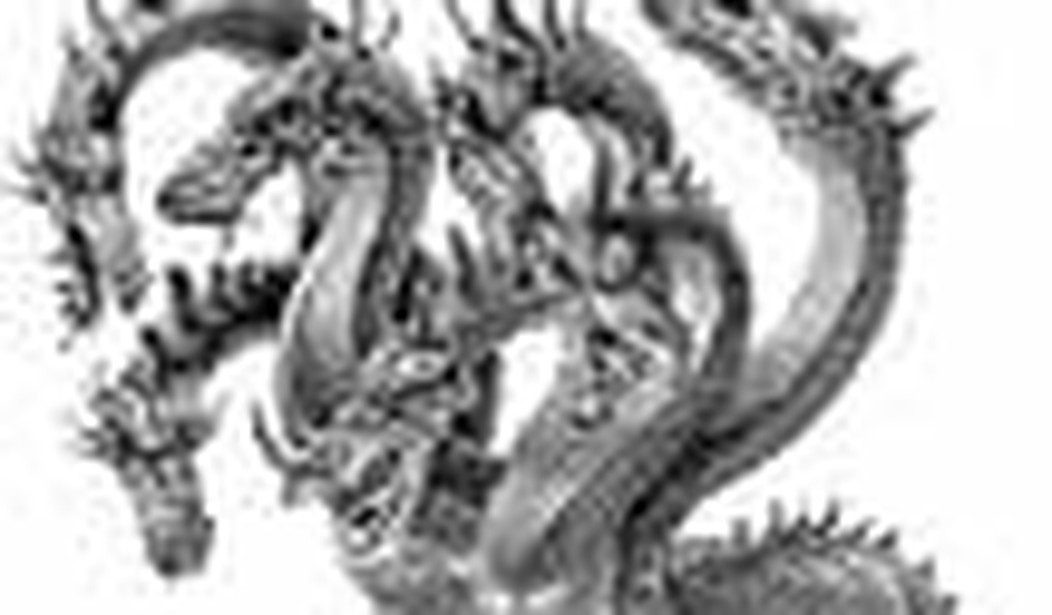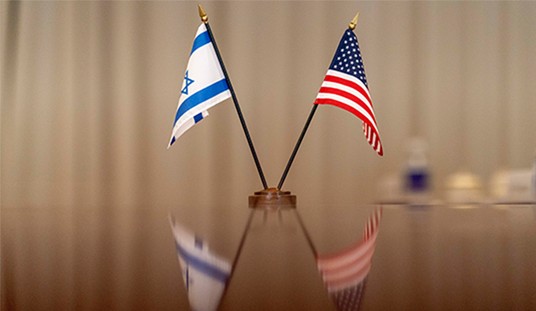Armed Liberal at Winds of Change takes on what he describes as the myth of the invincible "networked insurgency". The futility of fighting al-Qaeda has often been compared to fighting the mythical Hydra and the capture or death of each al-Qaeda "high value target" in Iraq was discounted as being as futile as cutting off the head of the legendary Lernaean serpent since each severed head was immediately replaced by two more. And when the words "network" and "insurgency" are juxtaposed, the public automatically associates the vastness and power of the Internet, the world’s best known public network, with the traditional potency of insurgencies to create the nightmare image of an invulnerable al-Qaeda, at once omnipresent and invincible. Armed Liberal writes:
the notion that we can’t defeat a networked guerilla force (see John Robb) … has pretty well taken hold … there are many heads, and so you can’t decapitate such a network, the argument goes. And since every violent act against a member of the network damages the network, and simultaneously helps it heal (by, for example, recruiting others to join the network), the issue is the ratio between damage/healing, and the attacker risks facing an impossible task, since the more damage they do the network, the stronger it may get.
And those who are not persuaded by allusions to Greek mythology must surely be silenced by an appeal to mathematics. Network theory, so the public was sometimes told, demonstrates the near-impossibility of disrupting a network like the Internet and hence, al-Qaeda. And as practical proof of this assertion, examples like this, from a.popular primer on networks are cited to put the proposition beyond refutation.
Motivated by the DARPA proposal, in January 2000 we performed a series of computer experiments to test the Internet’s resilience to router failures. Starting from the best available Internet map, we removed randomly selected nodes from the network. Expecting a critical point, we gradually increased the number of removed nodes, waiting for the moment when the Internet would fall to pieces. To our great astonishment the network refused to break apart. We could remove as many as 80 percent of all nodes, and the remaining 20 percent still hung together, forming a tightly interlinked cluster. This finding agreed with the increasing realization that the Internet, unlike many other human, made systems, displays a high degree of robustness against router failures. Indeed, a University of Michigan-Ann Arbor study had found that at any moment hundreds of Internet routers malfunction. Despite these frequent and unavoidable breakdowns, users rarely notice significant disruptions of Internet services.
What further proof could one require? What further evidence of the futility of trying to fight al-Qaeda? And yet Armed Liberal wondered what could possibly account for the recent defeats of al-Qaeda in Iraq? How could the AP report that "the civilian death toll in Iraq fell to its lowest level in recent memory"? Could it really be true, as the McClatchy Newspapers claimed, that deaths from terrorism had fallen so low that gravediggers in Iraq were openly complaining of unemployment? How could the apparent defeats suffered by al-Qaeda be reconciled with the confident assurance that it was invincible, however many heads were lopped off; what refutation could be found to the argument that one could remove "randomly selected nodes from the network" … "as many as 80 percent of all nodes" and still have "the remaining 20 percent" hanging together?
The answer to the conundrum is found in a close reading of experiment. What it says is that networks like the Internet are highly resistant to the removal of "randomly selected nodes". It says nothing about how sensitive they are to attacks made non-randomly on highly connected nodes. Winds of Change notes that the same primer on networks describes a totally different result when an experimental attack is made on highly connected nodes on the Internet. This time the network doesn’t shrug it off; it degrades rapidly.
Mimicking the actions of a cracker … we removed the largest hub, followed by the next largest, and so on. The consequences of our attack were evident. The removal of the first hub did not break the system, because the rest of the hubs were still able to hold the network together. After the removal of several hubs, however, the effect of the disruptions was clear. Large chunks of nodes were falling off the network, becoming disconnected from the main cluster. As we pushed further, removing even more hubs, we witnessed the network’s spectacular collapse. The critical point, conspicuously absent under failures, suddenly reemerged when the net¬¨ work was attacked. The removal of a few hubs broke the Internet into tiny, hopelessly isolated pieces.
But the careful reader would have noticed that neither the "proof" of a network’s vulnerability to the removal of key nodes nor the "proof" of invincibility against random attack necessarily applies to al-Qaeda. Winds of Change could be right in saying that "it’s possible to degrade and the destroy the effectiveness of networked insurgencies" — that attacking high value targets can actually degrade al-Qaeda; but the conclusion does not necessarily follow from the simple analogy to the Internet. In order to show the analysis works, it is necessary to show that the analysis applies. We must ask ourselves in what way the Internet might resemble al-Qaeda — and why a mode of attack applied to the one might apply to the other. If we could convince ourselves of that, then the analogies presented by Armed Liberal at Winds of Change would be more persuasive.
The place to begin is with the structure of al-Qaeda itself. Al-Qaeda’s cellular structure is a classic example of what is called a Small World Network. .That’s a fancy term to describe an organization where most members know only their immediate neighbors (or cell members) but can reach any other cluster of members by sending messages over a number of "hops" through members who are super-connected — that is members of more than one cell. The link-men make it possible for any given member to reach another through a very small number of "hops", typically less than six. That’s why it’s called a Small World Network.. We call these super-connected members "hubs". The diagram below represents this situation. It’s clear from the diagram that random members can communicate with the wider organization only through members who belong to two or more cells. With them they can communicate efficiently. Without the link-men they are cut off.

It is the existence of these link-men (or "nodes") with a high-degree of connectivity that allows a network to expand indefinitely. Without these super-connected nodes communication becomes impractical for a network of a large size. The reason the Internet is scale-free is because it contains a hierarchy of hubs through which a message can find its way. And the speed with which it can find the hub is invariant with respect to size. Another example of the same type is the air-travel network. It’s possible to fly to any part of the globe with relatively few connections precisely because of the existence of hubs. Without hubs communications and air-travel become very tedious. Both the Internet and the air-travel system, gigantic though they are, exhibit the properties of a Small World Network because they have nodes which have a high degree of connectivity. Although it is dissimilar in almost everything from the Internet and the air-travel system, al-Qaeda network architecture resembles them in that it shares this crucial property. It might theoretically be possible for al-Qaeda to redesign itself through a supreme effort of will into a random network in which no node is better connected than any other but the cost would be severe. Osama Bin Laden could communicate with his underlings only through a large number of steps in process similar to the game of Telephone or Chinese Whispers and receive a reply only in the same way.
In a network with the Small World property the removal of random nodes will hardly affect its operation. For example, there are a vast number of nodes on the Internet and thousands of airports throughout the world and striking one chosen by lottery will probably only damage something trivial. The odds a blow will land on a vital spot purely by chance are remote. An attacker without a detailed knowledge of the system is unlikely to stumble on a critical node purely by accident. Random attacks would probably be futile. But if that attacker understood precisely how the system worked the effect would be very different. Those directed attacks would be devastating. It would be as if an attack were mounted on the Internet Domain Name Servers or O’Hare Airport were shut down. The same applies to attacks on al-Qaeda’s hubs. It is the similarity between the structures of the Internet and al-Qaeda that make Armed Liberal’s arguments so persuasive.
That analysis shows what types of attacks are likely to be effective and which are probably going to be ineffectual. It suggests that Al-Qaeda will be highly resistant to random damage. Dropping a JDAM on the average Iraqi, Afghan, Saudi or Pakistani walking down the street is unlikely to produce no operational effect on al-Qaeda whatsoever. But dropping JDAMs on a high value target with key contacts and knowledge can be very disruptive. This explains why intelligence and working in partnership with allied Muslims is so important in fighting a networked insurgency. It explains why General Petraeus has so been effective. By working with Muslims, by "getting into the nodes" is it possible to identify the critical hubs. You can see the network from the inside. Then by taking down the critical hubs is it possible to rapidly degrade al-Qaeda. And by degrading al-Qaeda the effectiveness of its terror operations to intimidate a population into submission correspondingly declines. That’s why the partnerships with grassroots communities that the Coalition has formed in Iraq have been so effective. The Iraqis, in partnership with the Coalition have been identifying the hubs. In return the US has used its matchless kinetic warfare assets to take down the hubs. Taken together the partnership between political work and intelligence gathering on the one hand, and targeted attacks on the other hand, have proved very devastating against al-Qaeda. And that’s why there’s a slump in the graveyard business in Iraq.
The next installment of this two part series will describe several other interesting implications of al-Qaeda’s network structure that Armed Liberal did not address.
Richard Fernandez is PJM Sydney editor; he also writes at the Belmont Club.










Join the conversation as a VIP Member